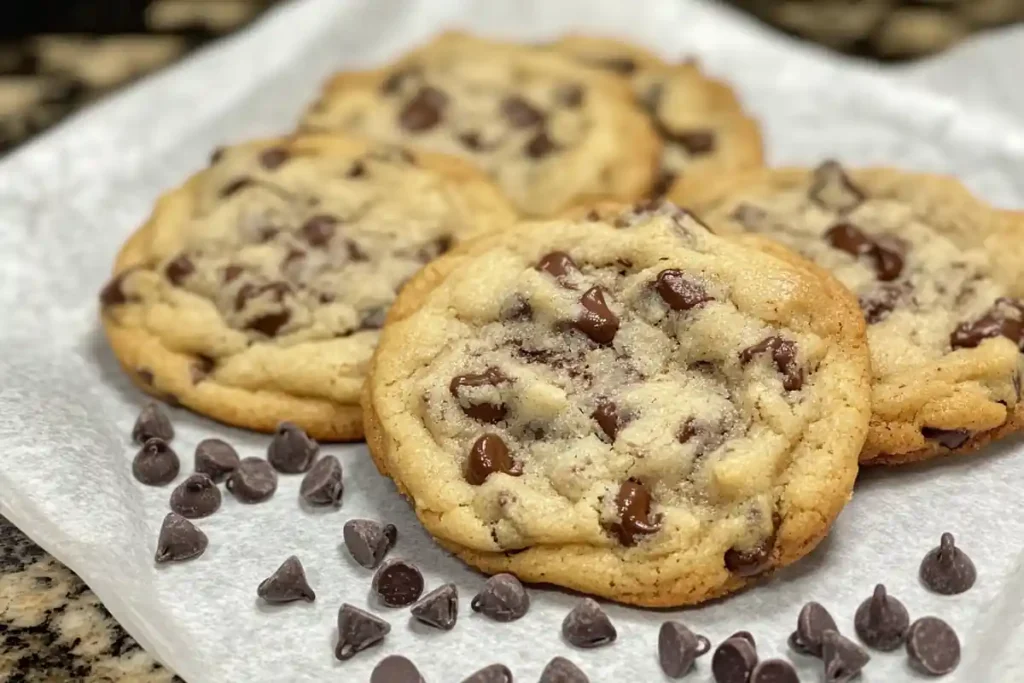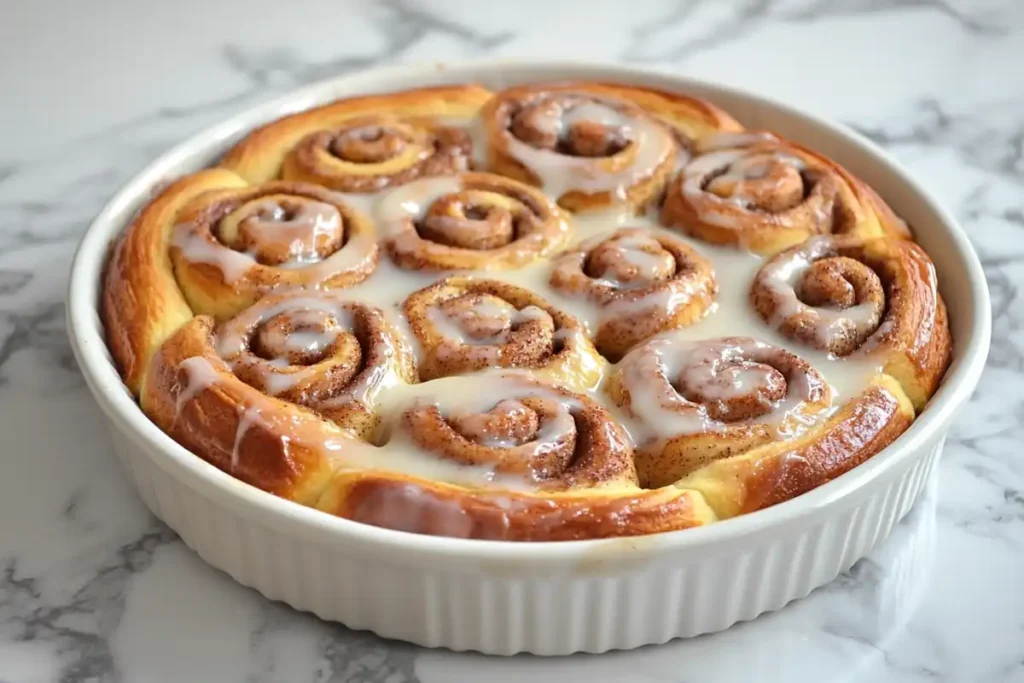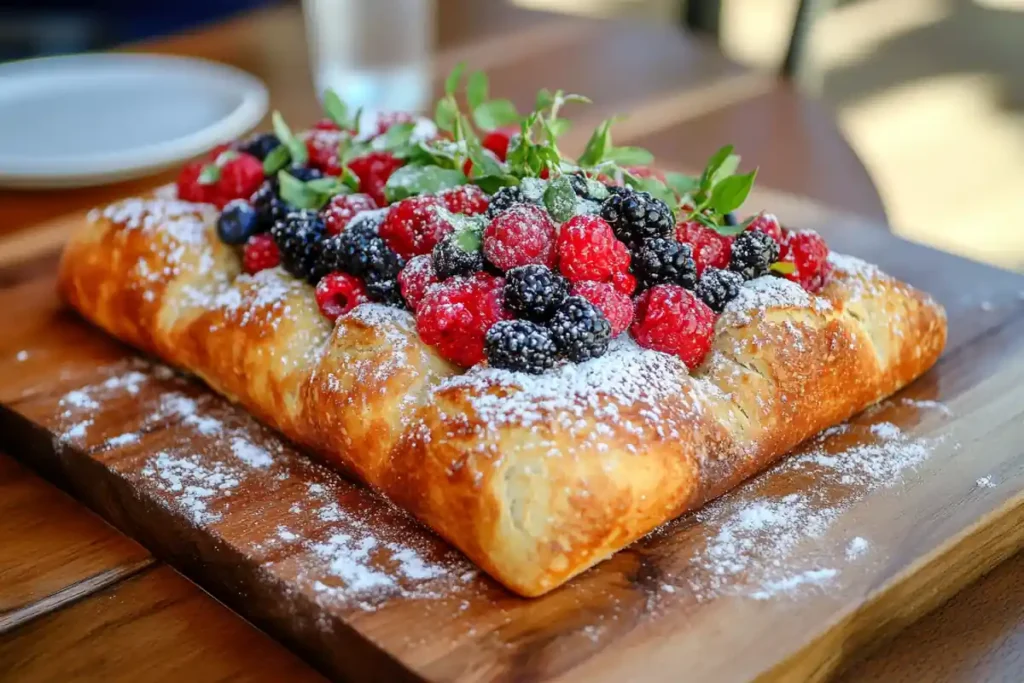Desserts hold a special place in every baker’s heart, and experimenting with different ingredients often leads to surprising results. One such ingredient is bread flour, which is typically reserved for making crusty bread or chewy pizza dough. However, its high protein content and gluten-forming abilities make it a hidden gem for desserts too. From cookies to cinnamon rolls, the possibilities are endless. In this article, we’ll explore the potential of bread flour dessert recipes, dive into tips, and share easy-to-follow recipes that will make your desserts truly unforgettable. Let’s get started!
Understanding Bread Flour
Definition and Characteristics
Bread flour is a high-protein flour specifically designed to promote gluten development. Unlike all-purpose flour, it contains around 12-14% protein, which gives baked goods their characteristic chewy and elastic texture. The extra protein works wonders in recipes where structure is key.
When used in desserts, bread flour enhances the chewiness of cookies, strengthens layers in pastries, and supports rich, dense treats like babka. This flour is a game-changer for desserts that need a bit more structure without compromising tenderness.
Common Uses in Baking
Bread flour is primarily used in artisan bread, bagels, and pizza dough because of its strength and elasticity. But its utility doesn’t stop there. It adds texture to cookies, stabilizes cake layers, and makes pastries exceptionally soft and flaky.
Whether you’re a novice baker or an expert, understanding how bread flour behaves in different recipes can elevate your skills. With its versatility, you can transform ordinary recipes into crowd-pleasers.
Purpose of the Article
This article is your guide to embracing bread flour in desserts. We’ll cover its advantages, dive into recipes, and offer tips for substitutions. By the end, you’ll have all the knowledge you need to incorporate bread flour confidently into your sweet creations.
Benefits of Using Bread Flour in Desserts
Enhanced Chewiness and Texture
One of the standout qualities of bread flour is its ability to create a chewy texture that’s absolutely irresistible. Whether you’re biting into a cookie with a satisfying snap or pulling apart gooey cinnamon rolls, the added gluten from bread flour gives desserts that perfect balance of structure and tenderness.
For cookies, bread flour can turn the humble chocolate chip variety into a bakery-style masterpiece with a soft center and a crispy edge. In rolls, it helps form layers that peel apart like a dream. So, if texture matters to you, bread flour is a must-try ingredient in your dessert arsenal.
Improved Gluten Development
Gluten is the backbone of baking. While some desserts rely on minimal gluten for a light, airy crumb (like cakes), others thrive on strong gluten networks. Enter bread flour, which fosters optimal gluten development.
This is especially useful for laminated desserts like babka, where the dough needs to be elastic enough to hold intricate layers of filling and dough. Bread flour ensures that your desserts don’t collapse or crumble under their own weight, making them sturdier while still remaining tender.
Suitable Desserts for Bread Flour Application
Not all desserts benefit equally from bread flour, but the right ones can shine. Here are some examples:
- Cookies: Perfect for chewy and slightly crispy chocolate chip cookies.
- Cinnamon Rolls: Offers the soft, elastic dough necessary for a gooey, fluffy result.
- Sweet Breads: Babka and brioche thrive with bread flour due to its structural strength.
- Pastries: Laminated desserts like croissants and Danish pastries can use bread flour for better layer definition.
While it might not replace all-purpose flour in every recipe, bread flour’s versatility makes it a key player in desserts that demand robustness.
Popular Bread Flour Dessert Recipes
Chocolate Chip Cookies

Chocolate chip cookies are a classic treat, but when made with bread flour, they reach a new level of indulgence. The higher protein content enhances chewiness, creating the perfect texture balance between soft centers and crispy edges.
Ingredients and Measurements
- 2 ¼ cups bread flour
- 1 tsp baking soda
- 1 tsp salt
- 1 cup unsalted butter, softened
- ¾ cup granulated sugar
- ¾ cup brown sugar
- 1 tsp vanilla extract
- 2 large eggs
- 2 cups semi-sweet chocolate chips
Step-by-Step Preparation Guide
- Preheat your oven to 375°F (190°C) and line a baking sheet with parchment paper.
- In a bowl, whisk together bread flour, baking soda, and salt.
- Cream the butter, granulated sugar, and brown sugar in another bowl until fluffy. Add eggs and vanilla extract, mixing well.
- Gradually mix the dry ingredients into the wet mixture. Fold in the chocolate chips.
- Scoop tablespoon-sized dough onto the prepared sheet. Bake for 8-10 minutes or until golden brown.
- Let cool slightly before serving.
Baking Tips for Optimal Results
- Chill the dough for at least 30 minutes before baking to prevent spreading.
- For extra chewiness, substitute a tablespoon of milk for some of the butter.
Cinnamon Rolls

Cinnamon rolls made with bread flour deliver unparalleled softness and elasticity, ensuring they remain fluffy and gooey even after baking.
Ingredients and Measurements
- 3 cups bread flour
- ¼ cup granulated sugar
- 1 packet (2 ¼ tsp) instant yeast
- 1 tsp salt
- ½ cup milk (warmed)
- 2 large eggs
- 4 tbsp unsalted butter, melted
Step-by-Step Preparation Guide
- In a large bowl, combine bread flour, sugar, yeast, and salt.
- Add the warm milk, eggs, and melted butter. Knead until the dough is smooth and elastic.
- Cover and let the dough rise for 1-2 hours or until it doubles in size.
- Roll out the dough into a rectangle, spread softened butter over it, and sprinkle with a cinnamon-sugar mixture.
- Roll tightly, slice into pieces, and arrange them in a greased baking pan. Let them rise again for 30 minutes.
- Bake at 350°F (175°C) for 20-25 minutes until golden brown.
Baking Tips for Optimal Results
- Use a light hand when spreading butter to keep layers intact.
- Drizzle with cream cheese icing while the rolls are still warm.
Babka
This decadent dessert, with its swirls of chocolate or cinnamon filling, is another standout for bread flour.
Ingredients and Measurements
- 4 cups bread flour
- 1 packet (2 ¼ tsp) active dry yeast
- ½ cup sugar
- 1 cup warm milk
- 2 large eggs
- 6 tbsp unsalted butter, softened
- Filling: 1 cup chocolate spread or cinnamon-sugar mixture
Step-by-Step Preparation Guide
- Mix bread flour, yeast, sugar, milk, eggs, and butter in a large bowl. Knead until elastic.
- Let the dough rise for 1-2 hours.
- Roll out into a large rectangle, spread the filling evenly, and roll it up tightly.
- Twist the roll and place it into a loaf pan. Let it rise for 30 minutes.
- Bake at 350°F (175°C) for 30-35 minutes or until golden brown.
Baking Tips for Optimal Results
- Brush with simple syrup after baking for a glossy finish.
- Use parchment paper in the pan to prevent sticking.
Sweet Focaccia

A unique twist on traditional focaccia, this dessert version uses bread flour to create a tender, slightly chewy base topped with sweet flavors.
Ingredients and Measurements
- 3 cups bread flour
- 1 packet (2 ¼ tsp) instant yeast
- 1 tbsp sugar
- 1 tsp salt
- 1 cup warm water
- Toppings: Fresh berries, powdered sugar, or honey
Step-by-Step Preparation Guide
- Combine bread flour, yeast, sugar, and salt in a large bowl. Add warm water and knead into a soft dough.
- Cover and let rise for 1-2 hours until doubled in size.
- Roll out the dough into a rectangular shape and transfer to a greased baking sheet.
- Press berries into the dough, drizzle with honey, and sprinkle powdered sugar on top.
- Bake at 375°F (190°C) for 20-25 minutes until lightly golden.
Baking Tips for Optimal Results
- Avoid overloading with toppings, as they can weigh down the dough.
- Serve warm for the best flavor and texture.
Tips for Substituting Bread Flour in Dessert Recipes
Adjusting Liquid Ratios
When substituting bread flour in dessert recipes, it’s crucial to adjust the liquid ratios. Bread flour’s higher protein content absorbs more liquid than all-purpose flour, which can result in dry or dense desserts if unaccounted for.
To counter this, increase the liquid content by one to two tablespoons for every cup of bread flour used. For instance, when making a cake or muffin, an extra splash of milk or water can restore the desired consistency. This small tweak ensures the batter or dough remains soft and pliable, yielding tender baked goods.
Modifying Mixing Techniques
Mixing techniques also play a key role in achieving success with bread flour. Over-mixing can cause excessive gluten development, leading to tough or rubbery desserts. To avoid this, mix just until the ingredients are combined.
For example, when folding wet and dry ingredients for cookies, use a spatula instead of an electric mixer to maintain a light texture. In laminated desserts like babka, gentler kneading techniques help achieve elasticity without overworking the dough.
Understanding When Not to Use Bread Flour
While bread flour is a star ingredient in many recipes, it isn’t always the best choice. Delicate desserts like sponge cakes, macarons, and angel food cakes require low-protein flours to maintain their airy structure. Using bread flour in these cases can result in dense, heavy bakes.
However, desserts like cookies, sweet bread, and rolls benefit significantly from bread flour’s properties. Knowing when and how to substitute ensures optimal results without compromising the dessert’s intended texture or flavor.
Pro Tip for Substitutions
For recipes requiring a mix of strength and tenderness, combine bread flour and all-purpose flour in a 1:1 ratio. This hybrid approach creates a balance, especially in cakes or soft cookies, where too much gluten could alter the final texture.
Frequently Asked Questions About Bread Flour in Desserts
Can bread flour be used to make cookies?
Absolutely! Bread flour works wonderfully in cookies, especially if you’re looking for a chewy texture with a slightly crispy edge. The higher protein content in bread flour develops more gluten, giving cookies a unique texture that is softer in the center yet firm enough to hold their shape. For best results, consider chilling the dough before baking to enhance the chewiness further.
Is bread flour OK for making cakes?
Yes, but with some reservations. While you can use bread flour to make cakes, the results might differ from traditional cake recipes made with all-purpose or cake flour. Cakes made with bread flour tend to be denser and chewier due to the increased gluten formation. To lighten the texture, you can mix bread flour with cornstarch or blend it with all-purpose flour in equal parts.
What happens if I use bread flour instead of plain flour?
Substituting bread flour for plain flour can alter the texture of your desserts. With its higher protein content, bread flour typically makes desserts chewier and sturdier. While this works well for cookies, sweet rolls, and bread-based desserts, it might not be ideal for light and airy desserts like sponge cakes. Always consider the recipe’s texture requirements when swapping flours.
What is a good use for bread flour?
Bread flour shines in recipes that demand elasticity and structure. It’s ideal for:
- Cookies: Enhances chewiness.
- Sweet Breads: Like babka, brioche, and challah.
- Pastries: Provides sturdiness for layered treats.
- Rolls: Cinnamon rolls and sticky buns achieve better softness with bread flour.
Its versatility makes it a must-have for bakers experimenting with desserts using bread flour.
Creative Twists and Expert Tips for Bread Flour Desserts
Adding a Creative Spin to Bread Flour Desserts
Bread flour doesn’t just stick to traditional recipes; it offers a canvas for inventive desserts that surprise and delight. Its unique properties allow you to experiment with new flavors and textures while maintaining structural integrity.
- Stuffed Cookies: Use bread flour to make oversized, chewy cookies filled with Nutella, caramel, or peanut butter for an indulgent treat.
- Savory-Sweet Fusion: Combine bread flour with savory elements like rosemary or flaky sea salt in sweet focaccia for a dessert that teases your taste buds with contrasting flavors.
- Layered Treats: Experiment with bread flour for layer-based desserts like chocolate babka or cinnamon rolls to ensure a firm yet tender bite.
Expert Tips for Perfect Bread Flour Desserts
1. Hydration is Key
When working with bread flour, keeping the dough hydrated is crucial. Since bread flour absorbs more liquid, always ensure your dough is soft and pliable. This is especially important for laminated desserts like babka or croissants.
2. Temperature Matters
Working with bread flour dough at the right temperature can make or break your dessert. Cold butter for laminated doughs, warm liquids for yeast-based treats, and room-temperature eggs for cookies will help ensure success.
3. Chill for Better Results
Desserts like cookies and rolls benefit immensely from chilling the dough. Refrigerating allows the gluten in bread flour to relax, preventing excess spreading in cookies or uneven rising in rolls.
4. Focus on Gluten Development
If you’re kneading or mixing dough for bread flour desserts, aim for moderate gluten development. Overworking can make the dessert tough, while underworking may result in a crumbly texture. Watch for elasticity in the dough as your guide.
Balancing Flavors in Sweet Recipes
Bread flour adds a robust texture to desserts, so balancing the flavors becomes essential. Pair the rich chewiness of bread flour treats with lighter, sweeter ingredients like fresh fruits, whipped cream, or sweet glazes to create harmony in your final product.
Incorporating Seasonal Ingredients
Take your bread flour desserts to the next level by using seasonal ingredients. Add pumpkin puree to cinnamon rolls in the fall or top sweet focaccia with fresh berries in the summer. This not only adds freshness but also keeps your desserts versatile year-round.
Conclusion and Final Thoughts
Bread flour is a versatile ingredient that deserves a place in every baker’s pantry—not just for savory breads but for sweet creations too. Its ability to add chewiness, structure, and depth to desserts opens up a world of possibilities for cookies, cinnamon rolls, babka, and even sweet focaccia.
By experimenting with bread flour dessert recipes, you can elevate traditional treats and create innovative new favorites. Whether you’re a seasoned baker or a curious beginner, this flour’s unique properties will inspire you to think outside the box and try something unexpected.
As we’ve explored, incorporating bread flour requires some thoughtful adjustments, from tweaking liquid ratios to carefully monitoring mixing techniques. These small changes ensure that your desserts come out perfectly every time. With expert tips and creative ideas at your fingertips, you’re now equipped to make the most of this often-overlooked ingredient in the dessert world.
Print
Soft and Chewy Bread Flour Cookies
- Total Time: 27 minutes
- Yield: 24 cookies 1x
Description
These soft and chewy cookies use bread flour to achieve a delightful texture that’s slightly chewy in the center and crisp around the edges. Perfectly sweetened and packed with flavor, they’re a unique twist on a classic cookie recipe, showing just how versatile bread flour can be in desserts. Great for pairing with a cup of tea or as a sweet treat after dinner!
Ingredients
- 1 cup (226g) unsalted butter, softened
- 1 cup (200g) granulated sugar
- 1 cup (200g) packed light brown sugar
- 2 large eggs
- 2 teaspoons pure vanilla extract
- 3 cups (375g) bread flour
- 1 teaspoon baking soda
- 1/2 teaspoon baking powder
- 1/2 teaspoon salt
- 1 1/2 cups (270g) semi-sweet chocolate chips (or any mix-ins of your choice like nuts or dried fruit)
Instructions
-
Preheat the oven:
Preheat your oven to 350°F (175°C) and line two baking sheets with parchment paper or silicone mats. -
Cream the butter and sugars:
In a large mixing bowl, use an electric mixer to cream together the softened butter, granulated sugar, and brown sugar until light and fluffy, about 2-3 minutes. -
Add eggs and vanilla:
Beat in the eggs one at a time, followed by the vanilla extract, until fully incorporated. -
Mix dry ingredients:
In a separate bowl, whisk together the bread flour, baking soda, baking powder, and salt. -
Combine wet and dry ingredients:
Gradually add the dry ingredients to the wet ingredients, mixing just until combined. Be careful not to overmix. -
Add mix-ins:
Fold in the chocolate chips (or other mix-ins) with a spatula until evenly distributed. -
Scoop the dough:
Use a cookie scoop or tablespoon to drop 2-tablespoon-sized balls of dough onto the prepared baking sheets, spacing them about 2 inches apart. -
Bake the cookies:
Bake in the preheated oven for 10-12 minutes, or until the edges are golden brown and the centers look just set. -
Cool and enjoy:
Allow the cookies to cool on the baking sheet for 5 minutes before transferring them to a wire rack to cool completely.
Notes
- Texture Tip: Bread flour adds chewiness to cookies because of its higher protein content, making this recipe perfect for those who love a slightly denser treat.
- Storage: Store in an airtight container at room temperature for up to 5 days or freeze for up to 3 months.
- Customization: Swap the chocolate chips for white chocolate, peanut butter chips, or even a mix of your favorite dried fruits and nuts.
- Prep Time: 15 minutes
- Cook Time: 12 minutes
- Category: Desserts
- Method: Baking
- Cuisine: American
Nutrition
- Serving Size: 1 cookie
- Calories: 215
- Sugar: 16g
- Sodium: 120mg
- Fat: 10g
- Saturated Fat: 6g
- Unsaturated Fat: 3g
- Trans Fat: 0g
- Carbohydrates: 28g
- Fiber: 1g
- Protein: 3g
- Cholesterol: 30mg
Keywords: bread flour cookies, chewy cookies, chocolate chip cookies, dessert recipes

